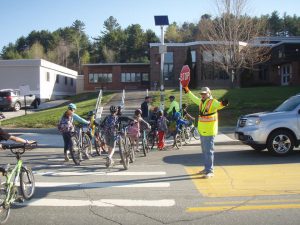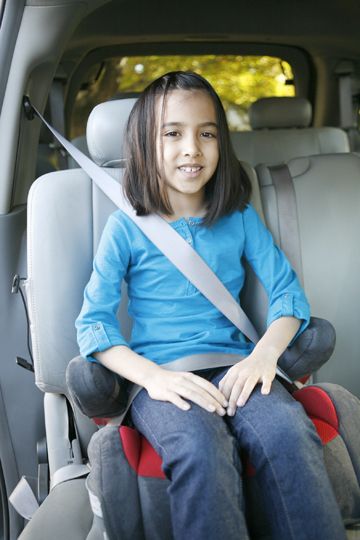School Pick-up/Drop-off Best Practices
The safety of students, faculty, and families is a top priority for schools. Policies and procedures relating to the transportation of all students should exemplify this safety focus, as transportation to and from school is a natural extension of the school day.
Because each school is unique, with specific student needs and facility limitations, there is not a one-sized fits all approach to designs or processes for the school pick-up/drop-off lane. However, there are some guiding principles that should apply for all situations.
Keep pedestrians and bicyclists separated from cars and buses.

Image provided by National Center for Safe Routes to School
Pedestrians and bicyclists are especially vulnerable during the busy before and after school windows, with increased traffic and congestion in and around schools. In general, minimize the potential for interactions between students who walk or bike and cars and buses used to transport students to and from school. This could be a physical separation, for example through designated travel lanes or routes or a time-based separation by staggering dismissal times based on mode of travel. Additionally, if pedestrian or bicyclists exit/entrance paths cross vehicle travel lanes (both on the street and within the school grounds), every effort should be made to supply crossing guards. And of course, all students traveling by bicycle should wear a buckled helmet.
The National Center for Safe Routes to School provides more information about walking or biking to school.
Ensure students are safely buckled up during pick up and drop off lines.

Image provided by NHTSA
Children should remain properly seated with car seat harness or seat belt fastened until the vehicle comes to a complete stop and a staff member indicates it is safe to leave the vehicle. Similarly, vehicles should remain stopped until everyone in the vehicle is properly restrained and a staff member indicates it is safe for the vehicle to move forward. Additionally, riding in the vehicle with bulky coats and backpacks on should be discouraged, as these items affect the ability of the seat belt or car seat harness to protect children in a crash. If needed, plan accommodations for those children who may need assistance buckling their car seat harness or seat belt, for example a separate pick up location or a designated area to pull over and assist children.
Enforce bus safety policies
NC Department of Instruction (NCDPI) policy requires that schools ensure all riders are completely seated within the seating compartment while the bus is in motion. Bus drivers should wait for students to be seated before moving forward. Students should not get out of their seats to depart the bus until the bus is fully stopped. Additionally, students should be encouraged to utilize seat belts when riding on a bus equipped with belts. These principles should apply to both public school buses as well as charter and activity buses used for school-related activities.
The North Carolina School Bus Safety Web provides more information about school bus safety.
While transportation to and from school can be a complex issue, with varied approaches, these guiding principles can help ensure that whatever policy and practice is in place at a given school is focused on ensuring the safety of travel to and from school.


